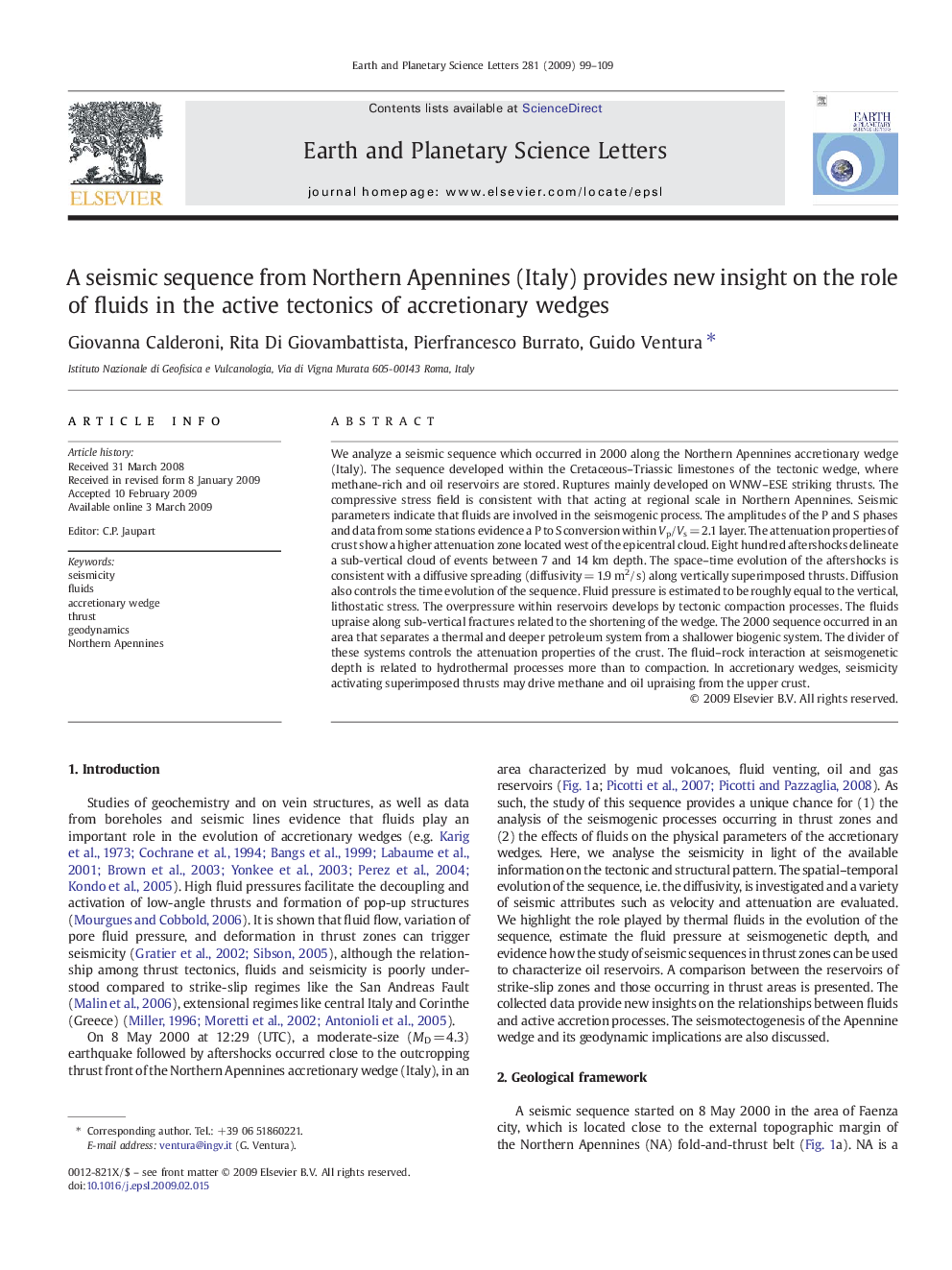| کد مقاله | کد نشریه | سال انتشار | مقاله انگلیسی | نسخه تمام متن |
|---|---|---|---|---|
| 4679231 | 1634875 | 2009 | 11 صفحه PDF | دانلود رایگان |

We analyze a seismic sequence which occurred in 2000 along the Northern Apennines accretionary wedge (Italy). The sequence developed within the Cretaceous–Triassic limestones of the tectonic wedge, where methane-rich and oil reservoirs are stored. Ruptures mainly developed on WNW–ESE striking thrusts. The compressive stress field is consistent with that acting at regional scale in Northern Apennines. Seismic parameters indicate that fluids are involved in the seismogenic process. The amplitudes of the P and S phases and data from some stations evidence a P to S conversion within Vp/Vs = 2.1 layer. The attenuation properties of crust show a higher attenuation zone located west of the epicentral cloud. Eight hundred aftershocks delineate a sub-vertical cloud of events between 7 and 14 km depth. The space–time evolution of the aftershocks is consistent with a diffusive spreading (diffusivity = 1.9 m2/s) along vertically superimposed thrusts. Diffusion also controls the time evolution of the sequence. Fluid pressure is estimated to be roughly equal to the vertical, lithostatic stress. The overpressure within reservoirs develops by tectonic compaction processes. The fluids upraise along sub-vertical fractures related to the shortening of the wedge. The 2000 sequence occurred in an area that separates a thermal and deeper petroleum system from a shallower biogenic system. The divider of these systems controls the attenuation properties of the crust. The fluid–rock interaction at seismogenetic depth is related to hydrothermal processes more than to compaction. In accretionary wedges, seismicity activating superimposed thrusts may drive methane and oil upraising from the upper crust.
Journal: Earth and Planetary Science Letters - Volume 281, Issues 1–2, 30 April 2009, Pages 99–109